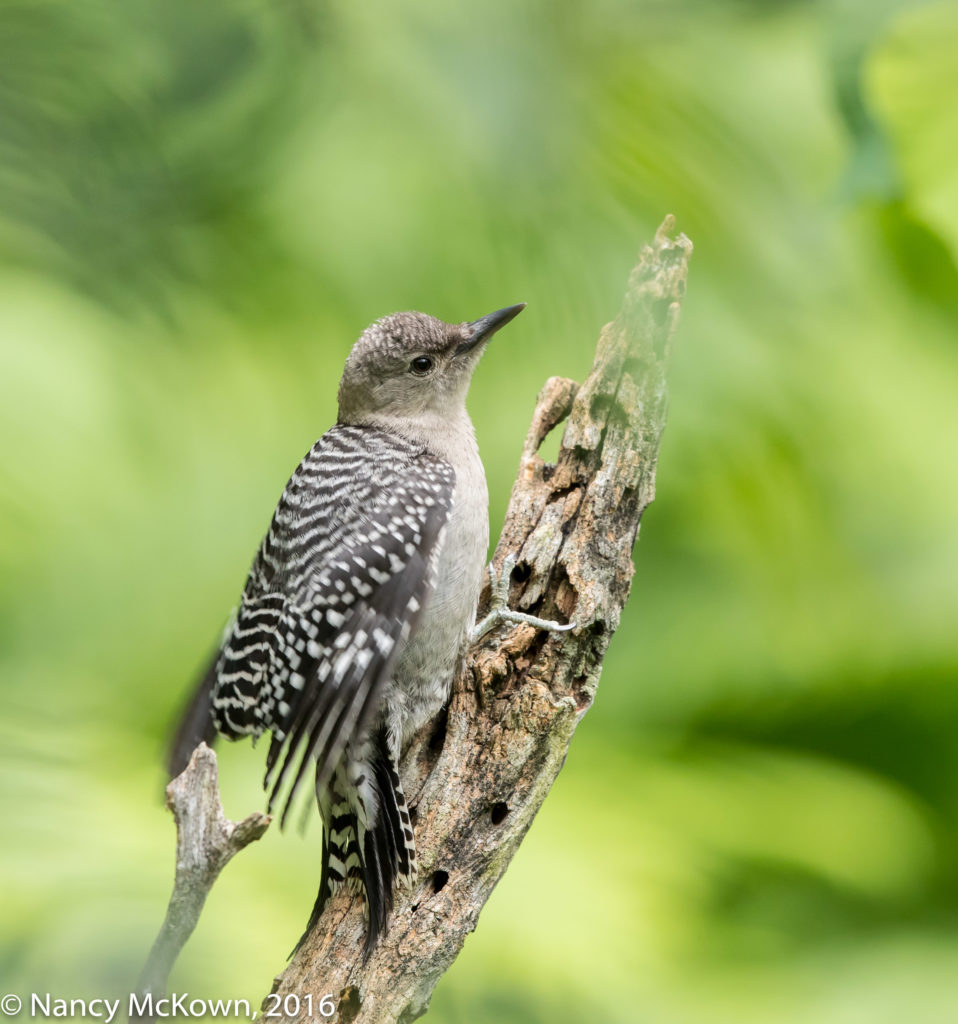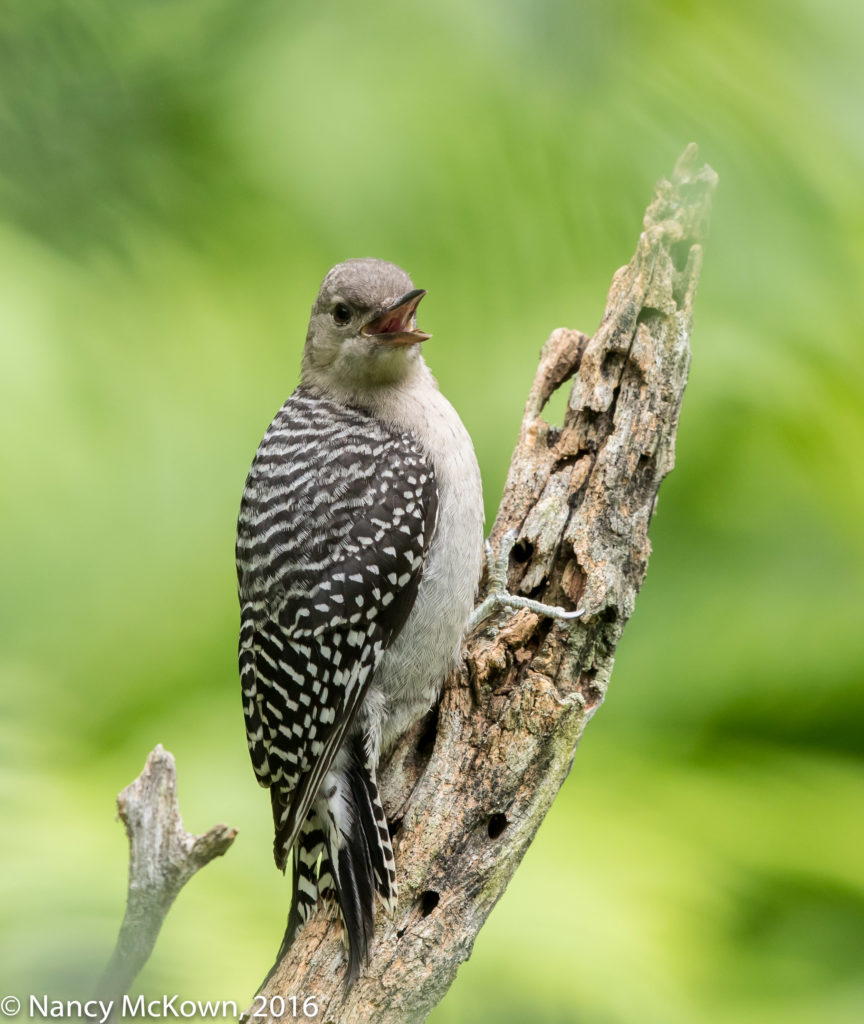Photographing a Young Woodpecker
The perching bird looked like a newly fledged Red Bellied Woodpecker….innocent, very shaky, possibly on her maiden voyage out into the wild. No trace yet of the red tinted feathers that will soon appear on her head and belly. (For a moment I wondered if this bird was another species of woodpecker but the black and white streak patterns on her wings were very distinctive.) She used her oversized clutching zygodactyl feet to latch onto a cracked and decayed tree bough that had been pock-marked with dozens of woodpecker holes. It was an ideal perch for bird photography- one that we had erected between two trees in front of a lush green background and away from distracting branches.
The fledgling looked around for a moment, spotted her parent, then began her harsh rattling call to be fed.

Notice the Motion Blur– This Young Bird is
Fluttering her Wings To Signal Her Parents.
ISO1250; f/7.1; 1/500 Second
LCD Screen Glare
My camera was setup on a tripod with the low morning sun behind me. I positioned the lens to capture (as the bird’s background) a multilayered forest of feathery ferns huddling at far end of the driveway. I adjusted the aperture a little wider than usual to transform those individual fronds into lush, polished buttery green swirls- picture perfect bokeh.
At first when I magnified the camera’s LCD screen to take a look at the images, I saw only a harsh glare. I could not review the quality of the background or see any detail on the woodpecker’s feathers. Hoping for more bird action, I stayed in that location until the light was no longer appealing and then went into the house to review my images.

ISO1250; f/7.1; 1/500 Second
Anti-Glare LCD Viewfinders
It’s not uncommon to have the DSLR camera’s LCD viewing monitor compromised by reflection and glare. LCD protectors (for phones, computers, cameras) are available to help alleviate this problem. They purportedly let you closely inspect your images outdoors without the distractions of reflections or shadows. An added benefit is the claim that these anti glare covers help prevent scratches on the camera’s LCD screen.
My experience has been that these covers do work to reduce glare, but the additional layer of plastic or glass on the LCD screen make the images less sharp and colors less vibrant -especially when I attempt to closely inspect with magnification. I don’t apply them to my DSLR cameras, phone or computer.
These days, DSLR camera LCD screens are engineered to be resilient. They can still be scratched if the camera is crammed into a bag along with piercing keys, zippers or anything sharp. The scarred LCD screen will most likely still display your images – but who wants to look at surface scratch marks every time you review your images? Professional level DSLR cameras are constructed to be ruggedly handled, but it’s best to treat them with deliberate care.
See more photos of summertime fledglings in this post.









Nice! It doesn’t look like a woodpecker. He’s rather chubby. It looks like Momma and daddy were doing a very good job of responding to his shouts for more food. Thanks for writing! Always a pleasure.
you can almost hear him saying, “feed me, feed me!”
Regarding screen glare. I made my own shield with some heavy cardboard and duck tape. I cut a piece about two inches wide and long enough when folded the same
dimensions as the screen, wrapped it in duck tape and then painted inside with a black marker. It folds up to fit in a pocket easily and when in use will show the screen in bright sunlight in the field.
Good Morning Phil,
Thank you for reading my blog.
So you made a sun blocker for the LED screen that fits in your pocket. Very clever…much better than just cupping my hand to block the sun. I will try it.
Nancy thank you for identifying this bird for me. I had one at my feeder for the first time today. I am in VA and have never seen and adult. It is migration time now so I am glad he stopped by.
You are welcome. Thank you for visiting my blog.